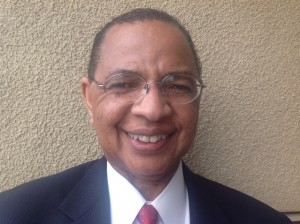Antioch’s Congressmen among Bay Area delegation to speak out against Governor’s flawed plan for the Delta
Friday, March 29th, 2013On Thursday, March 28, several U.S. Representatives from northern California spoke out in opposition to the release of the next portion of the Governor’s proposal for the Sacramento-San Joaquin Delta, including Congressmen Jerry McNerney and George Miller who each represent a portion of Antioch. The Governor’s flawed plan would devastate the region and has met strong opposition from the Bay Area’s Congressional delegation.
“I have said time and again that the Governor’s flawed plan is reckless and stands to cost California taxpayers billions of dollars and countless jobs. I stand firmly with our farmers, families and small business owners who rely on a clean, healthy Delta to sustain their livelihoods – and continue contributing to our local economy. To move forward with this fundamentally flawed plan without examining all reasonable alternatives is reckless. I will continue to fight to make sure that the interests of the people of the Sacramento-San Joaquin Delta are represented in any plan related to our region. These are real folks who stand to have their business doors closed and farmers who stand to lose their family land that has been in their hands for generations if the Governor has his way, and they deserve to have a seat at the table.” – Rep. Jerry McNerney (CA-9)
“This week the State of California released three more chapters of a draft of the Bay Delta Conservation Plan (BDCP) that still continues to ignore the expressed interests of all stakeholders. The Governor’s plan must incorporate the co-equal goals of a healthy Bay-Delta and water reliability, but without the best available science, a finance plan that is affordable for California taxpayers, comprehensive efforts to protect fish, and without sufficiently analyzing the portfolio based alternative, it is far from achieving both goals and is yet to be a sustainable policy. I hope to see improved drafts in the coming months.” – Rep. George Miller (CA-11)
“This proposed Bay Delta Conservation Plan continues to be rushed and flawed. The science is not complete, has not been reviewed by an independent third party, and there remain serious concerns over whether this plan would even meet federal permitting requirements. Moving forward could cause permanent harm to wildlife and devastate farmers, fishers and small business owners who depend on the Delta for their livelihoods. Until we have a plan that is transparent, based on sound science and developed with all stake-holders at the table, then any process that moves us closer to building these tunnels will recklessly risk billions of California tax dollars and thousands of jobs.” – Rep. Mike Thompson (CA-5)
“Unfortunately, there is nothing in the release of these chapters of the draft Bay Delta Conservation Plan (BDCP) to indicate that any of the concerns expressed by northern California stakeholders have been addressed. In particular, Chapter 7 outlines a governance structure that once again relegates northern California to simply giving input, rather than being part of the implementation or decision making process. The Delta counties continue to be shut out, yet we are expected to shoulder the weight of the negative impacts. To solve California’s water situation, we must find an approach that doesn’t take the problems of one half of the state and lay them at the feet of the other half. Alternatives, including the portfolio approach, must be considered, and no more chapters of the BDCP should be released until that occurs.” – Rep. Doris Matsui (CA-6)
“As currently designed, the BDCP is really a Bay Delta Destruction Plan that takes taxpayers for a ride, leaves behind a mess, and takes water from the north and delivers it to the south. This is simply an expensive plumbing system that doesn’t add a single drop to the state’s water supply,” said Congressman Garamendi. “As an alternative, we need a comprehensive water plan to meet the needs of all California residents. The only way we can do this is by stretching the supply of this most precious resource through water conservation, recycling, and storage. We need to also fix the Delta through levee improvements, use the best science throughout the process, and respect water rights.”- Rep. John Garamendi (CA-3)
“The release of the second portion of the draft BDCP plan has not been reviewed by an independent third party, and continues to leave serious questions about the science and impact on fisheries unaddressed. My concern remains that a plan based on giant peripheral tunnels will devastate salmon runs that depend on freshwater flows in the Delta.” – Rep. Jackie Speier (CA-14)
“Water is an essential resource to our state, and it’s vital for our health, our environment, and our wallets that we have a comprehensive, long-term plan for securing water access and storage that’s based on sound science. The most recent portions of the Bay Delta Conservation Plan (BDCP) released remain flawed. Continuing with this plan, without getting input from all stakeholders, without considering other alternatives, and without specifying how the project will be paid for is a bad idea for Sacramento County families. The potential risk to jobs and billions of California tax dollars is too big to ignore.” – Rep. Ami Bera (CA-7)






















